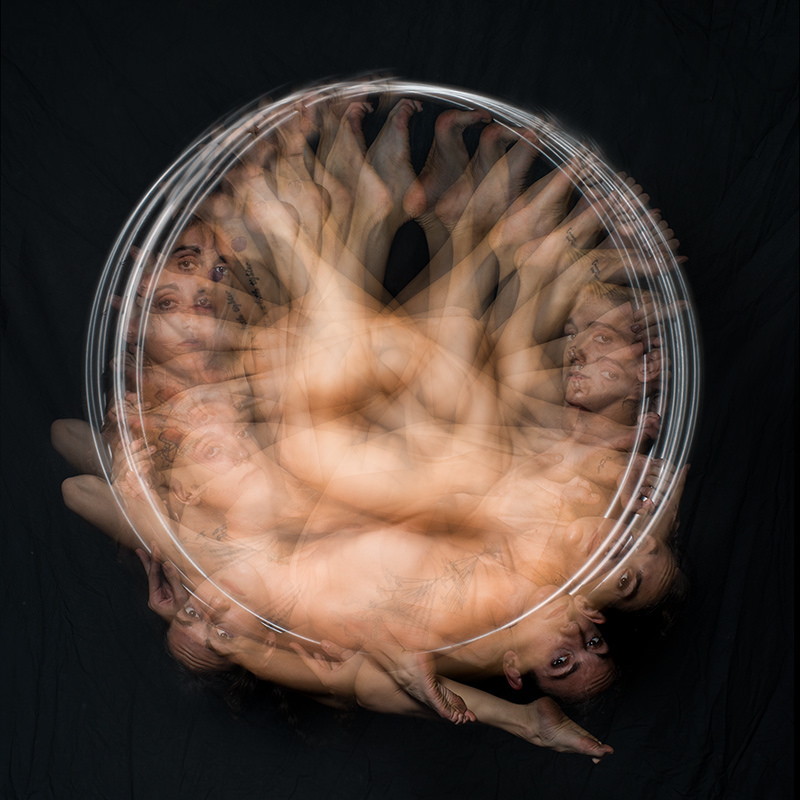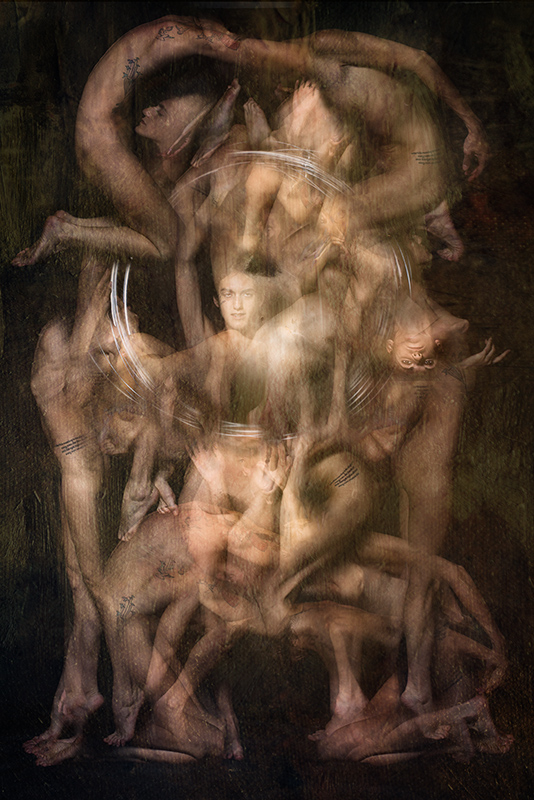Phyllis and I are working on an artist’s book—really a booklet—based on my Multiple Exposures body of work. The title, Multiple Exposures, is a play on the technique used, and the fact that the models in the images are exposed (so if female nudity offends you, this work is not for you).
The style of this artist’s book is what we’ve come to call a “pocket” portfolio. It is printed and hand-bound here in my studio, with the intended use of showcasing my images (with some our our pocket portfolios, Moab Paper has also used them at trade shows to demonstrate various paper stocks).
While Multiple Exposures will not be for sale, constructing it is labor intensive and copies are obviously limited. I truly believe that each copy will be regarded as a valuable collectible in times to come. If you are an art gallery interested in this work, or a collector interested in a print, I am happy to arrange for a personal showing.

Here’s the introduction I wrote for the Multiple Exposures artist’s book:
As a technique, the in-camera multiple exposure has its roots in the film era, with notable examples including the surrealistic imagery of Man Ray and others. The digital era has to a great extent eclipsed the use of the multiple exposure, but this forgotten and important element of our photographic heritage can be used to make images that are difficult—or impossible—to create in post-production alone.
Working with a model, the process is both choreographic and collaborative. The model and I agree on the shape that is to be created using the individual components of the multiple exposure, and establish marks. The model then takes each position in turn, and with a great deal of bidirectional communication I fire the strobes and camera on a dark background.
Some of my original thinking when I began this work was to reference relevant historical art using the medium of the in-camera multiple exposure, hence Rodin, Picasso, and Marcel Duchamp. But as I went along I became more interested in creating entirely new elements of the life force. In some sessions this was romantic and sexual, in others the insect kingdom intruded.
Finally, as in all things philosophic, the religious made its appearance—with the bizarre sensual sadism that is part-and-parcel of Western ideology, followed by references to an as-yet-unnamed theology that owes something to Hinduism, and something to the hope that each of us can recognize the light within each other.

Related story: You can read more about my Gates after Rodin image in A Rorschach for MFAs, and how I began doing these images here. For more stories and images, check out the Multiple Exposures category on this blog.
Pingback: Through a Window with Selective Focus